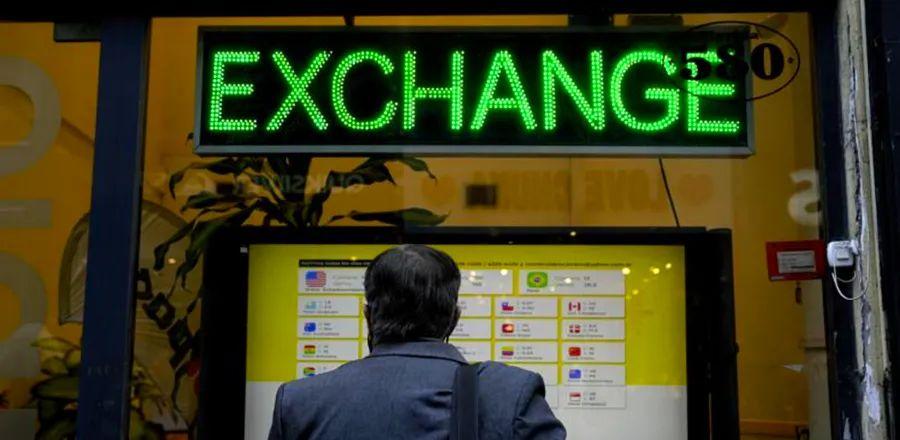Argentina Introduces a New Exchange Rate Exclusively for Tourists

In recent times, many visitors to Argentina have come to realize that they could have maximized their spending power significantly had they brought cash to exchange for pesos on the unofficial market.
In informal cash transactions, a dollar could often fetch double the number of pesos compared to what one would receive when using a credit or debit card at the official exchange rate.
“You can almost sense the color draining from their faces when they discover this,” remarked Jed Rothenberg, a travel agency owner who specializes in Argentina tours.
As of Friday, this situation should be a thing of the past. The government has rolled out a new policy that enables visitors using credit and debit cards to obtain more pesos than the official exchange rate allows.
On Friday, the official exchange rate placed one dollar at 157 Argentine pesos. However, in the unofficial market, often dubbed the “blue dollar,” it could soar to as high as 285 pesos. Under the new system used by credit card companies, it was pegged at 292 pesos.
The rise of informal currency traders became more prevalent following the implementation of strict capital controls in 2019, aimed at shielding the local currency from significant devaluation amid the country’s soaring inflation.
What’s behind the new regulation?
The government aims to use this new credit and debit card rule to reduce cash transactions, making cash-heavy tourists less susceptible to theft, while also ensuring that sales taxes are collected, which often go unnoticed without an electronic record.
For years, Rothenberg has attempted to clarify Argentina’s varying exchange rates and the challenges faced by tourists when using credit and debit cards, though he wasn’t always able to convey the complexities effectively.
“Most people are utterly baffled: ‘You mean there are multiple exchange rates, and one of them can differ by double or even triple digits?’,” Rothenberg remarked.
The new regulation is unlikely to simplify the already confusing situation. It introduces yet another exchange rate to the more than ten that already exist in Argentina, making it nearly impossible to determine a straightforward value for the peso.
The government also applies various taxes on foreign currency exchanges based on the intended use, resulting in colloquial exchange rate names like the “Qatar dollar” for travelers (in reference to the World Cup), the “Netflix dollar” for streaming services, and the “Coldplay dollar” for booking international artists to perform in the country.
The reason it’s challenging to pinpoint how much a peso is worth is that “its value differs for everyone,” explained Martín Kalos, an economist and director at Epyca Consultores, a local consultancy.
“The government has been fragmenting the market. There’s no single value; multiple prices exist depending on who you are or what transaction you intend to make,” he added.
The government aims to strengthen the peso to manage the country's import costs, hoping to prevent further escalation of price increases. In September, the economy recorded an annual inflation rate of 83 percent.
According to Kalos, President Alberto Fernández’s administration is resorting to “palliative measures or quick fixes” because elections are approaching next year, and any attempts to rectify these imbalances could lead to economic hardship that might prove detrimental at the polls.
Argentina has experienced numerous financial crises over recent decades, leading its citizens to be skeptical of their currency. As a result, those with sufficient income to save typically choose to do so in dollars or euros.
Even those Argentines who are financially astute often find themselves bewildered by the situation.
Individuals who do not receive government subsidies or engage in specific financial markets can purchase up to $200 a month but must pay an additional 65 percent tax on the official exchange rate.
Argentines using their credit cards to buy foreign currency incur a 75 percent surcharge over the official exchange rate, provided their spending remains under $300. However, if their monthly expenditures exceed this amount, the surcharge escalates to 100 percent.
Argentines also have the option to acquire dollars through financial markets by trading bonds or stocks, but they end up paying a peso price that aligns closely with the informal market rates. This is the system that credit card processing companies implemented on Friday.
Experts noted that they need to observe the rollout of the new system for visitors to determine its effectiveness.
However, Rothenberg mentioned that if executed properly, this change could significantly benefit tourists.
“Tourists simply use their credit cards; they aren’t concerned with the specifics,” he stated. “If they manage to get this right, Argentina could emerge as one of the leading tourist destinations in the next few years, especially considering the high costs in the U.S. and Europe right now.”
Evaluation :
5/5



